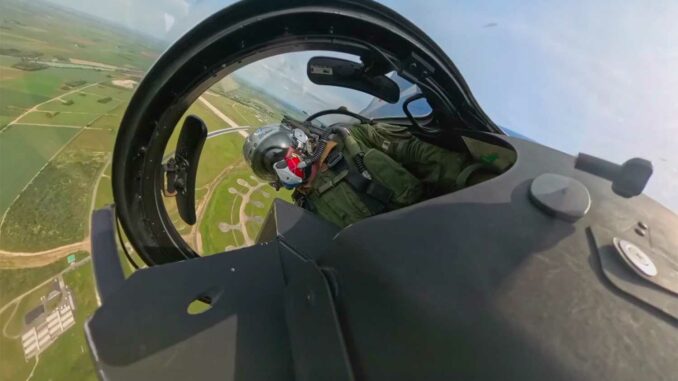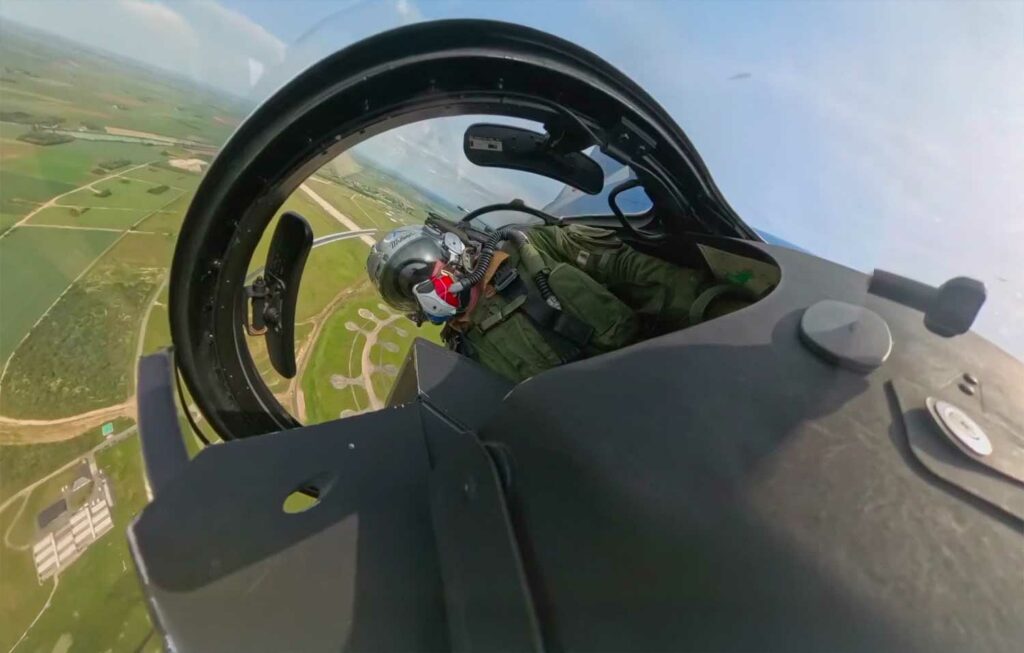
The Rafale centralizes information from its sensors using MSDF, freeing the pilot from sensor management and enhancing tactical superiority.
In summary
The Rafale is one of the first European fighter jets to incorporate advanced multi-sensor data fusion (MSDF). At its heart, the Modular Data Processing Unit (MDPU) combines information from the RBE2 AESA radar, electro-optical sensors, SPECTRA electronic warfare system, radar emission detection sensors, and tactical data links in real time. The goal is to provide the pilot with a clear, unified tactical picture, eliminating the need to manage each sensor individually. This reduces cognitive load, increases combat responsiveness, and allows the Rafale to perform air-to-air and air-to-ground missions simultaneously. This capability shifts the pilot from the role of “sensor operator” to that of tactical decision-maker, thereby enhancing the aircraft’s operational effectiveness and survivability in contested environments.
The central role of the Modular Data Processing Unit (MDPU)
The MDPU is a modular open-architecture computer developed by Thales and Dassault Aviation. It combines several hundred processing modules and manages over a billion instructions per second. Its mission is to continuously collect heterogeneous data streams from onboard sensors:
– the RBE2 AESA radar operating in the X band for air-to-air and air-to-ground detection and tracking;
– the OSF (Optronique Secteur Frontal) system for passive infrared detection and reconnaissance;
– the SPECTRA electronic warfare system (radar warning receiver, jamming, decoy);
– IFF receivers and information from tactical data links (Link 16, L16-F, Rafale-Rafale network);
– internal sensors (inertial navigation systems, GPS) for geolocation and correlation.
Instead of transmitting these raw data streams to the pilot, the MDPU applies correlation, filtering, and prioritization algorithms. It produces a single tactical display shown on the cockpit’s multifunction screens, which lightens the pilot’s workload and reduces interpretation errors in complex scenarios.
The logic and benefits of multi-sensor fusion
Multi-sensor data fusion (MSDF) involves combining observations from active and passive sensors to build a unified and consistent representation of the air situation and battlefield.
On the Rafale, MSDF operates in three layers:
- Low-level fusion: correction of measurement inconsistencies between sensors (speed, distance, azimuth).
- Intermediate fusion: correlation of air or naval tracks detected by different sensors, elimination of duplicates.
- Decision-making fusion: prioritization of threats and allocation of weapon resources.
This approach transforms a set of disparate “points” into a coherent tactical image, showing the nature and position of priority threats.
It offers a significant advantage in an environment saturated with electromagnetic emissions and low-signature targets. For example, a long-range stealth aircraft may be only imperfectly detected by RBE2 radar but spotted by SPECTRA via its radar emissions or infrared signature; fusion combines these clues to track it earlier and more reliably.

The direct impact for fighter pilots
Before the era of multi-sensor fusion, a pilot had to monitor the radar, RWR (radar warning receiver), IRST, and data links separately, interpret contradictions, and make quick decisions.
This high cognitive load limited the ability to perform combined air-to-air and air-to-ground missions in a single flight.
Thanks to the Rafale’s MSDF, the pilot becomes a tactical decision-maker. The system presents a single synthetic display showing threats ranked by danger, ammunition status, and likely firing zones of enemy defenses. This reduces reaction time by several seconds, which is crucial in aerial combat where a BVR missile can travel 20 km in a matter of seconds.
This simplification of the interface also improves resilience in stressful situations. In a interdiction scenario, the pilot can simultaneously monitor air threats and plan a ground attack without switching from one sensor mode to another. The aircraft acts as a digital co-pilot that filters and prioritizes information.
Support for multi-role missions
The versatility of the Rafale is based on this fusion of data. The aircraft is capable, during a single mission, of intercepting air targets while guiding precision strikes on the ground.
Without MSDF, the pilot would have to divide his attention between the radar for air combat and other sensors for air-to-ground guidance, which would be unrealistic in a contested environment.
The MDPU coordinates the use of the radar in air-to-air and air-to-ground modes, while integrating target designation data from drones or other aircraft via the Link 16 network. It continuously calculates firing solutions, anticipates ground-to-air threats detected by SPECTRA, and adjusts the display to avoid conflicts.
This means that a Rafale in multi-role configuration can prioritize dealing with an approaching hostile missile while maintaining readiness for an air-to-ground strike, without having to manually reconfigure the sensors. This provides a decisive advantage in high-intensity operations, where time and mental load are limited.
Technical aspects and capacity development
The MDPU was designed from the Rafale’s F2 standard but came into its own with the F3R standard and will be further enhanced with the F4.
– The RBE2 AESA radar introduced in the F3R offers better multi-target detection and increased resistance to jamming.
– The SPECTRA system provides a complete overview of hostile emissions and coordinates active responses (jamming, decoys).
– The MDPU’s software openness facilitates the integration of new weapons (Meteor, AASM) and sensors (Talios pods, RECO NG pods).
Computing power has increased by approximately 40% between the F3R and F4, enabling more complex correlation and artificial intelligence algorithms. The Rafale F4 will also be able to exploit data from AWACS aircraft or reconnaissance drones via secure links, thus integrating off-platform sensors into the fusion.
These improvements enhance the consistency of collaborative missions and pave the way for the future Air Combat System of the Future (SCAF), in which the Rafale will operate alongside support drones.
Tactical and operational benefits
Multi-sensor data fusion offers three major benefits:
- Information superiority: the combination of active and passive sensors increases the range and reliability of detection.
- Reduced cognitive load: the pilot can focus on tactics and mission command.
- Increased versatility: the Rafale can change roles in mid-flight, responding to unexpected air threats without abandoning its primary mission.
These benefits translate directly into higher mission success rates and increased aircraft survivability.
They explain why data fusion has become a central criterion in the modernization of other fleets, such as the American F-35 or the future South Korean KF-21.
Future prospects and limitations
The Rafale’s data fusion demonstrates the advantage of an architecture focused on processing rather than on individual sensors. However, certain limitations remain:
– dependence on the quality of data links;
– the risk of computer overload in a saturated electromagnetic environment;
– the need to keep threat libraries and algorithms up to date.
In the future, the introduction of machine learning algorithms could further automate the identification of new radar or infrared signatures and increase the ability to quickly recognize emerging threats.
This development is part of the global trend in next-generation fighter programs, where the human role will be gradually assisted, or even partially replaced, by decision support systems.
The Rafale, thanks to its multi-sensor data fusion, already illustrates this transition: the pilot is no longer a simple screen manager, but a mission commander with a global view, a decisive asset in modern air warfare.
War Wings Daily is an independant magazine.